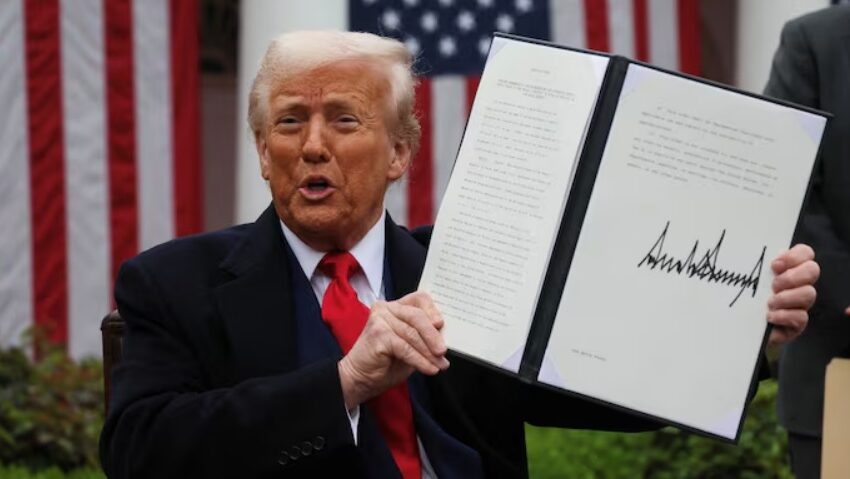
Trump Announces New Tariffs: What They Are and Why They Matter
US President Donald Trump has announced a series of new tariffs, arguing these will boost American manufacturing and protect jobs.
But the import taxes have thrown the world economy into chaos and many products are set to become more expensive for US consumers.
The UK and US are set to announce a deal on tariffs, with other countries also hoping to reach an agreement with the White House.
What are tariffs and how do they work?
Tariffs are taxes charged on goods bought from other countries.
Typically, they are a percentage of a product’s value.
A10% tariff means a $10 product would have a $1 tax on top – taking the total cost to $11 (£8.35).
Companies that bring foreign goods into the US have to pay the tax to the government.
They may pass some or all of the extra cost on to customers. Firms may also decide to import fewer goods.
Why is Trump using tariffs?
Trump says tariffs will encourage US consumers to buy more American-made goods, increase the amount of tax raised and lead to huge levels of investment.
He wants to reduce the gap between the value of goods the US buys from other countries and those it sells to them. He argues that America has been taken advantage of by “cheaters” and “pillaged” by foreigners.
The US president has made other demands alongside tariffs.
When he announced the first tariffs of his current term against China, Mexico and Canada, he said he wanted them to do more to stop migrants and illegal drugs reaching the US.

What tariffs has Trump announced?
China:
Chinese imports to the US include everything from iPhones and electrical goods to children’s toys and clothing.
Trump unveiled a 10% tariff on goods from China on 4 February, which doubled to 20% a month later.
On 9 April, he increased tariffs to 145% for most Chinese goods – with certain products facing a 245% tax.
An exemption for Chinese goods worth less than $800 ended on 2 May. Shipments now face 90% duty or $75 per item – increasing to $150 per item after 1 June.
In response to Trump’s measures, China has introduced 125% tariffs on US imports.
Trump also imposed significant tariffs on China during his first presidential term. These were expanded by his successor Joe Biden, which cut the amount America imports from Beijing.
But the US still buys much more from China ($440bn) than it sells to it ($145bn).
Canada and Mexico:
Canada and Mexico were also targeted by Trump in February, when he introduced a 25% tax on imports from both countries and a 10% levy on Canadian energy.
There have been a number of delays and exemptions to these tariffs.
In response, Canada introduced a 25% tax on some vehicles imported from the US on 9 April.
Steel and aluminium:
A 25% import tax on all steel and aluminium entering the US – including products made from these metals – took effect on 12 March.

Cars:
Since 2 April, foreign-made cars have faced a 25% levy. This was extended to cover imported engines and other car parts on 3 May.
On 29 April, Trump softened the rules to reduce the effect on US car companies.
10% ‘baseline’ and higher tariffs:
On 5 April, Trump announced most countries – including the UK – would face a 10% “baseline” tariff on all goods sent to the US.
On 9 April, he unveiled a range of much higher tariffs for about 60 countries, described as the “worst offenders” among America’s trading partners.
Hours later he announced a 90-day pause, during which the 10% “baseline” rate would be paid by all named countries apart from China.
In response, many countries are working on retaliatory measures.
Smartphones and computers:
An exemption for some electronic devices from China and elsewhere – including smartphones and computers – was announced on 12 April.
Trump later warned the concession could be short lived.


